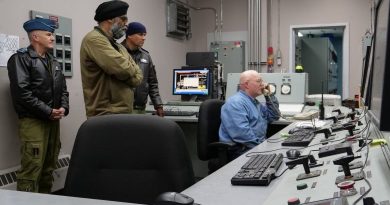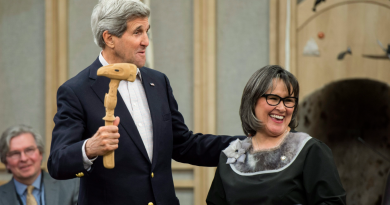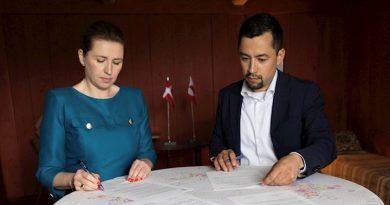Blog – Can we make peace with nature in a rapidly changing Arctic?
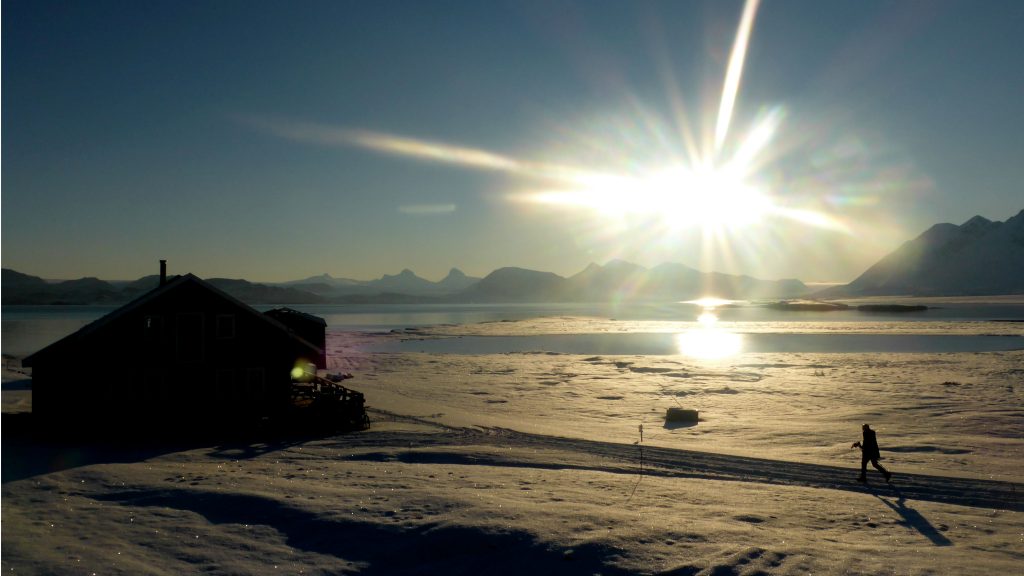
The United Nations Environment Programme is calling for bold action to “make peace with nature” by cutting greenhouse gases and restoring biodiversity as the world emerges from the COVID pandemic. “Innovation and investment only in activities that protect both people and nature”, is the motto. What does this mean for the rapidly changing Arctic and the Indigenous peoples living there?
The daffodils in my spring garden in Germany are cowering in a wild, windy, April snow shower. Just last week we had 26 degrees Celsius here – a bit of a record for March in this part of the world. The weather is changeable. Unpredictable. April showers have traditionally been a characteristic of this time of year. But whereas not so long ago most people around me would have been insisting even the most extreme weather was “just normal”, now people are asking whether the snow and hard frost when the fruit trees are already in bloom has something to do with climate change – whatever the weathermen say. A sign of a growing awareness that still has to translate into action?
“To urgently solve…”

In just under three weeks’ time, world leaders will convene in the USA on the invitation of President Joe Biden to discuss ways of speeding up climate action to try to make the 1.5 – or at least two-degree Celsius- target set out in the 2015 Paris Agreement. The average global temperature is already some 1.2 degrees Celsius above the pre-industrial level. We are getting perilously close to that upper bar, beyond which we risk disastrous impacts. And the predictions of the World Meteorological Organization suggest this year will be yet another of the world’s hottest.
The COVID19 pandemic has helped us temporarily reduce emissions. (Germany, where I live, would not have made its climate target otherwise). But the economic recovery to come could lead to a giant surge, unless it takes the form of a “green recovery” as propagated by the UN and others.
In February, a report entitled Making Peace with Nature was launched by UN Secretary-General Antonio Guterres and UNEP Executive Director Inger Andersen. “Governments must come up with synergistic and ambitious targets to safeguard the planet by almost halving greenhouse gas emissions in this decade, and by conserving and restoring biodiversity,” is one key message. The report is based on findings from several major global assessments including reports by the Intergovernmental Panel on Climate Change (IPCC), the Intergovernmental Science-Policy Platform for Biodiversity and Ecosystem Services,(IPBES) UNEP’s Global Environment Outlook report and research on zoonotic diseases such as COVID-19. It confirms we are in a grave triple environmental emergency – climate, biodiversity loss and pollution – and tries to provide a “Blueprint to Urgently Solve Planetary Emergencies, Secure Humanity’s Future”.
“To Urgently Solve”… what a headline. What a monumental undertaking!
These days, there is a lot of emphasis on stressing the positive. The “narrative” has to be such that the world doesn’t collapse into resignation or even despair. It has to be constructive, point ways forward, out of the crisis. “The world can transform its relationship with nature and tackle the climate, biodiversity and pollution crises together to secure a sustainable future and prevent future pandemics”, the UN announced, flagging the report.
Yes, we can. But is the will there to do it, and in time to make sure our “triple planetary emergency” does not end up in complete disaster?
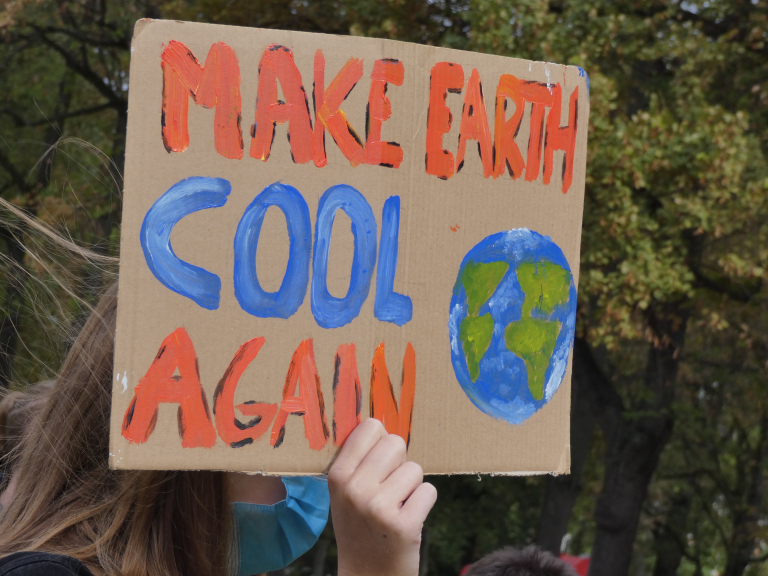
Joining up the dots
The authors set out to explain “how advances in science and bold policymaking can open a pathway towards the achievement of the Sustainable Development Goals by 2030 and a carbon neutral world by 2050 while bending the curve on biodiversity loss and curbing pollution and waste”.
A tall order? – Or a no-brainer? A win-win? Or all of the above? With Biden’s climate summit this month, the Convention on Biodiversity COP 15 coming up in May in China and the once-postponed UNFCCC climate summit on the horizon in Glasgow in November, there is plenty of stage room to showcase “bold policymaking”, against the background of recovery from the crippling COVID crisis. But what would it involve?
“Taking that path means innovation and investment only in activities that protect both people and nature,” the UN explains.
The Arctic: global versus local?
As climate change transforms the Arctic and easier access attracts international interest in exploiting natural resources and opening transit routes, I find myself wondering what that path means for the icy north of our rapidly heating planet, and for the people who live there. The blocking of the Suez Canal by a grounded giant freighter in recent weeks showed the vulnerability of our globalized trade system – and fuelled interest in using northern sea routes through the Arctic, becoming navigable because of climate warming – to speed up international trade.
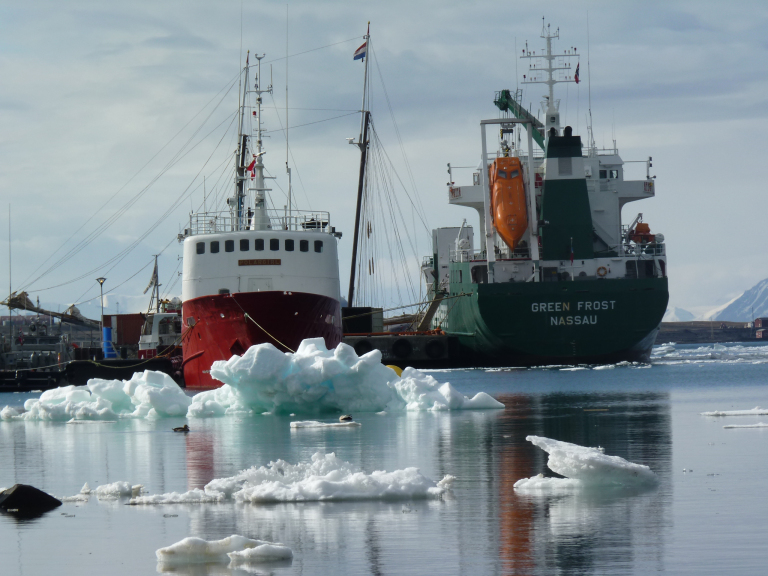
Since the mid-1980s, the Arctic has warmed at least twice as fast as the global average, reinforcing a long downward trend in summer Arctic sea ice extent.
See also: “When the Arctic ice won’t freeze”
Last year saw record temperatures across the region, including the highest known temperature ever recorded anywhere north of the Arctic Circle, at 38.0°C. In the Siberian Arctic, temperatures more than 5 °C above average fuelled the most active wildfire season in an 18-year long data record. The Laptev Sea, a marginal sea of the Arctic Ocean, experienced a marine heatwave lasting from June to October. The annual Arctic Report Card published by the US National Oceanic and Atmospheric Administration (NOAA) documented “the sustained transformation to a warmer, less frozen and biologically changed Arctic”.
These changes in the remote region at the top of the world might once have evoked a “who cares?” response from the wider public. But it has become ever clearer how and to what extent the region influences the global climate. The decreasing extent of sea ice and snow cover along with the melting Greenland ice sheet lead to an acceleration in the rate of warming of surface air temperatures in the Arctic. The loss of the reflective white surfaces of snow and ice leads to more heat absorption, more melting and more warming. Land ice melting into the ocean is contributing to global sea level rise and the resulting changes in salinity are changing ocean circulation patterns which, in turn, influence our climate and global weather patterns. The past year has seen widespread public interest in studies related to a possible collapse of the Gulf Stream, the effects of changes to the jetstream and the release of greenhouse gases from thawing permafrost.

“On the outer limits of our reference systems”
But as growing concern about global impacts drives a green energy revolution to “urgently solve” the planetary emergency, the mainly Indigenous communities who live in the Arctic region fear their own needs are not being considered in the international debate. In various (digital) encounters with Indigenous representatives in recent weeks, I have heard a lot of concern about what the President of the Saami parliament Ali Kekitalo has dubbed “green colonialism”.
Indigenous peoples and other long-term residents of the high north communities fear that the “green recovery” could be happening at the cost of those living a close-to-nature life and bearing little responsibility for the climate emergency facing the planet. While Saami reindeer-herders or hunting-and-fishing high northern communities are already struggling hard to cope with the impacts of climate change, they are also facing intrusions from the outside as the world seeks solutions to the energy crisis and outsiders make their way into what they see as potentially profitable regions now becoming more accessible.
At the Arctic Frontiers conference I attended in February, (not in Arctic Tromsö but from my home office in a snowy Bonn this time), Rolf Rodven, the Executive Secretary of the Arctic Monitoring and Assessment Programme (AMAP) remembered how his grandfather used to predict when the river ice would melt each year. Until one day he said he couldn’t do that any more. “We are on the outer limits of our reference systems”, Rodven told a session on Climate Collaboration in the Arctic. That puts it in a nutshell. As the Arctic struggles to cope with rapid climate change, he stressed the need to include all parties, to combine the efforts of authorities, Indigenous, scientists and others to meet the challenge. Sustaining the economy, he stressed, also has to sustain culture and land. “Arctic peoples are well placed to do that”. Alas, it seems the inclusion of the Indigenous people who call the Arctic home in the national and international climate debates still leaves a lot of room for improvement.
When the ground sinks beneath your feet
I gained a similar impression from speakers at the “Permafrost Carbon Feedback Dialogues”, a series of high-level (digital) meetings organised by the Permafrost Carbon Feedback Action Group (PCF), over the last four weeks. The group is a Canadian private sector team of entrepreneurs, scientists, permafrost engineers, politicians, Indigenous leaders and others committed to focussing attention on the extent and wide-ranging impacts of permafrost thaw and its climate feedbacks. (I will have more on the issue and the movement in future posts).
As the permafrost thaws due to the rapid increase in Arctic temperatures, embedded microbes act on the organic carbon and release large volumes of CO2 and methane, the PCF experts explain. This is the permafrost carbon feedback (PCF): warming promotes thaw, which liberates greenhouse gases, causing more warming. The group says the volume of these gases threatens to “derail global attempts to meet Carbon Budgets, substantially moving up the goal post for global decarbonization.” It says there is a lack of international collaboration to face up to the issue or “deploy potential mitigation methods.”
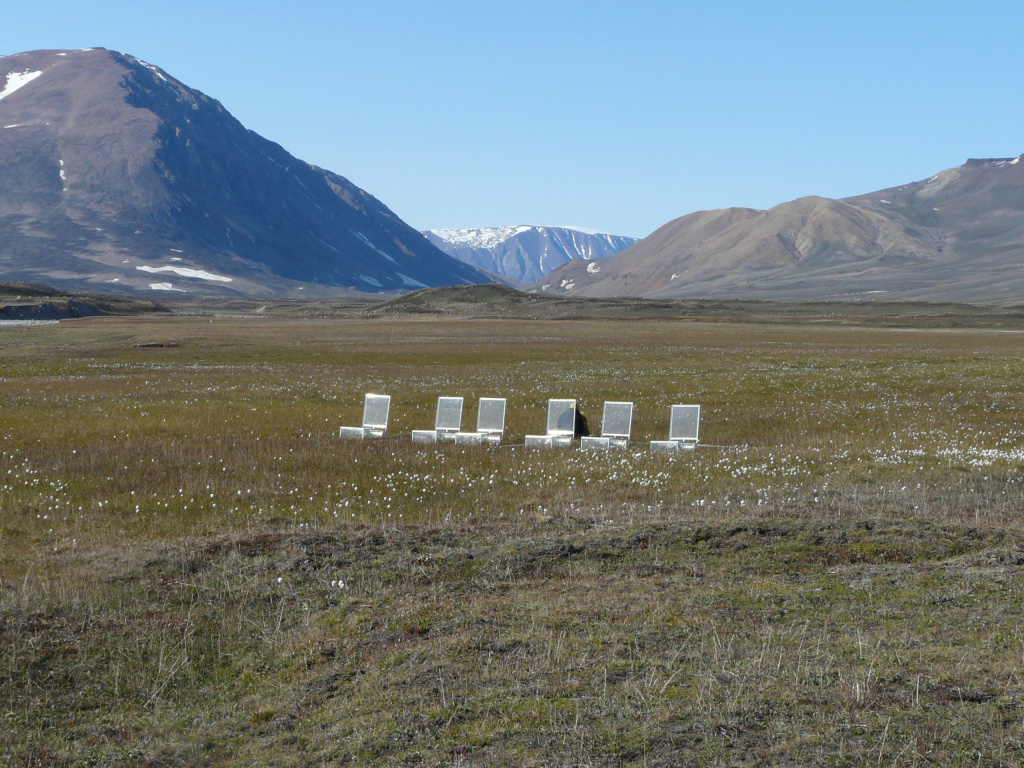
The right to be cold
One of the experts addressing that meeting was Candis Callison, Associate Professor at the School of Journalism, Writing, and Media, and the Institute for Critical Indigenous Studies at the University of British Columbia. Callison belongs to the Tahltan, an Indigenous people located in Northwestern British Columbia. Across the north, she noted, although much of the population is Indigenous, they are minorities in the states they have become part of. These include the USA, Russia, Canada and Norway – big players in the fossil fuel industry which has altered our climate. Indigenous groups are already being affected disproportionately by the climatic changes in the Arctic. Their economies, infrastructure and culture are in transformation. Whole villages have to resettle as the coast erodes. The land is changing, and with it the flora and fauna on which traditional lifestyles depend. I remember meeting archaeologist Anne Jensen in Barrow, Alaska back in 2008 and hearing how people would call her up in the middle of the night to help rescue family graves as cemeteries eroded into the sea. Recently I have seen job advertisements for full-time “climate archaeologists” in the north, specialised in saving what can be saved before this history and heritage disappears.
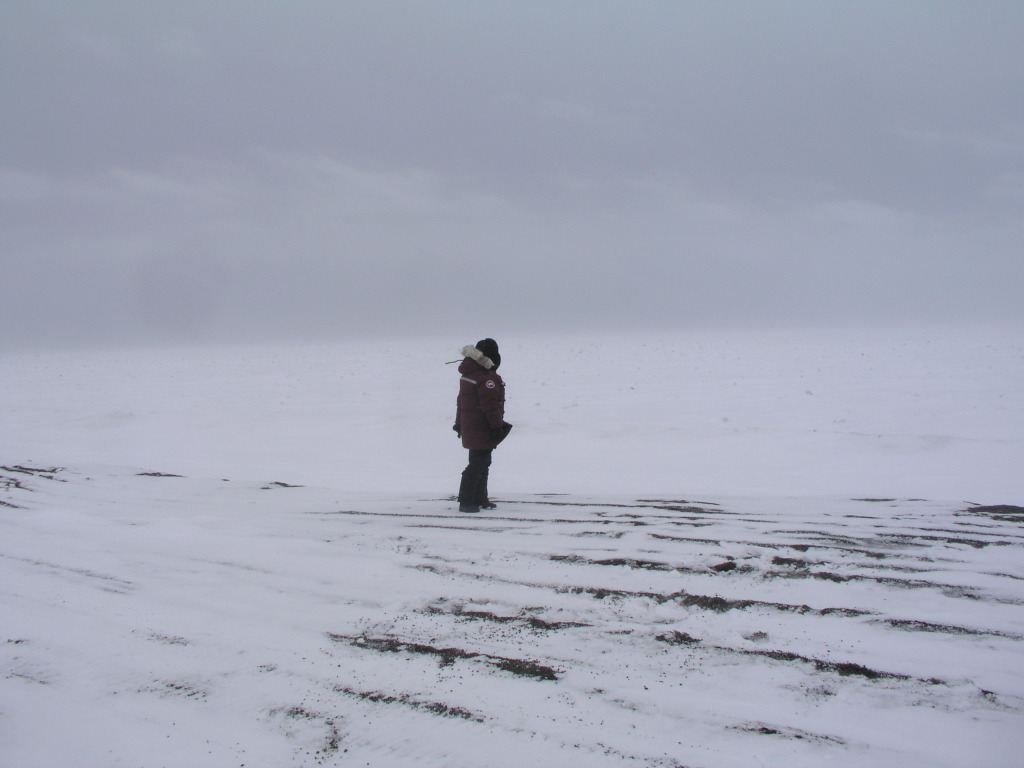
Callison says Indigenous people and issues have been neglected and ignored to a large extent in national and international assessments of climate change, and things are only changing slowly. The IPCC was very slow to acknowledge Indigenous people and their role in managing land, she told the meeting. The UNFCCC had no specific reference to Indigenous People and the Arctic until 2005, the year when Sheila Watt Cloutier, at that time chair of the Inuit Circumpolar Council (ICC), and other Inuit from Canada and Alaska handed a petition to the Inter-American Commission on Human Rights, claiming unchecked greenhouse gas emissions violated Inuit people’s human rights. The resulting debate laid the groundwork for future actions linking climate change and human rights.
In 2015, Watt-Cloutier published The Right to be Cold. But at the Paris Climate Conference in Paris that same year, despite the efforts of the then chair of the ICC Okalik Eegeesiak to have climate change regarded as a human rights problem and the rights of Indigenous peoples anchored in the Agreement, the word Arctic was not mentioned in the final document.
See also my post from 2015: Paris: a COP-out for Arctic Peoples?
Callison stresses the need for mutual respect and community engagement when it comes to tackling climate change and adapting to changing conditions. Indigenous knowledge has an invaluable role to play – and Indigenous peoples want to be treated as equal partners. Instead, she reports, most of the power is held by non-Indigenous people. At meetings of the UNFCCC, she notes, most of the Indigenous action takes place at side-tables rather than at the main ones. Yet, she argues, there is so much in Indigenous culture that could be applied.
When the solution becomes the problem
Renewable energy is in high demand as the world scrambles to meet its climate targets and cut CO2 emissions. Countries like Norway, Sweden and Finland are making use of their potential to produce wind energy, for example. I know from my own local experience in rural Germany how controversial this can be. The NIMBY principle sets in. Everybody wants to be environment-friendly, but nobody wants the turbines near their houses. I have little sympathy for most of this opposition, given that turbines here can only be set up at a generous distance from homes and to my mind are preferable to any of the fossil alternatives heating up the planet. But when I heard Inga Anne Karen Sara, a young Sami politician and member of a traditional reindeer-herder family in Norway, explain her problems with wind energy developments in her homeland, I felt deeply touched by the reproach that in her part of the world nature is being destroyed in the name of “green”; that “solutions” to the climate crisis are harming the wellbeing and livelihoods of Indigenous people in the north seeking to continue traditional lifestyles in harmony with their environment.
Research shows that reindeer avoid grazing in areas where they can see or hear wind turbines. Their migration patterns and the sites where they give birth to their young are also disturbed by the new technology.
“Solutions for climate change destroy more land, so global consumption can continue”, Sara told Arctic Frontiers participants. Global is a key word here. We are not talking about decentralised renewable energy production to benefit a remote rural community. Indigenous reindeer herders and others across this northern region are being harmed by industrial-scale windparks to produce energy for elsewhere. Consumption is the other key issue. Can we continue to consume and grow indefinitely with our finite natural resources?
It is hard enough to adapt to a changing climate. But the young reindeer herder says adapting to the so-called solutions is even harder.
“The solution is not destroying even more nature, making problems for parts of the world where Indigenous people are living sustainably”, she said. That provides a lot of food for thought, and brings me back briefly to that latest UNEP report: Making peace with nature. Surely interfering with nature at the cost of Indigenous peoples in the interests of a so-called “green” development, is the ultimate contradiction?
Colonialism in a green disguise
Susanne Normann from the University of Oslo published a paper in 2020 in the Journal of Community Psychology: Green colonialism in the Nordic context: Exploring Southern Saami representations of wind energy development.
She looked at large-scale wind power industrial sites in Norway and how the Indigenous Southern Sami community experienced them. Several of these projects are being carried out in mountain regions where the Saami people have reindeer herding rights based on their historical land use of the areas. They say the large-scale developments will have a disastrous effect on herding, as they bring more human activity into the area and the construction of infrastructure and road networks which impact on reindeer pastureland. This represents a threat to Saami herding practices, livelihoods, and so cultural survival.
“Although large-scale wind energy projects are framed as climate change mitigation strategies, they can simultaneously endanger sustainable life systems, violate human rights, or add an “insult to the injury” of communities already striving to adapt to climate change,” she finds.
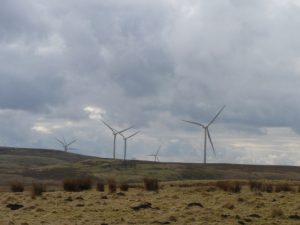
Pirita Näkkäläjärvi is an elected member of the Sami Parliament who works in the financial management of one of the biggest Finnish energy companies. She was interviewed for a publication by the Goethe Institute in 2020, The right to be cold: People in the Arctic and climate change. (Das Recht auf Kälte: Die Menschen in der Arktis und der Klimawandel. It “gives a voice to the people who have lived in the high north for generations, like the Sami parts of Finland, Norway and Sweden and Yakutia/Russia and Greenland”, and looks at how some of the rights and traditions of Indigenous peoples are being threatened.
Näkkäläjärvi has come to the conclusion that active support for the Indigenous communities there while working for a major energy company need not represent a conflict. “Both my work and my political position are based on the same values of sustainability, inclusion and equal rights,” she says. Windparks can be built in regions where they do not threaten Indigenous culture, she argues.
Image and profit
The energy from the wind turbines is destined both for domestic consumption and for European electricity markets. Susanne Normann says the rights are frequently sold to transnational investment funds, and that global interests set the agenda. The Norwegian government facilitates the large-scale developments to reach its international climate commitments. The purchase of the renewable energy will help companies, both national and transnational, to “green” their activities in line with the Paris Agreement. Normann mentions Norsk Hydro, Alcoa, Google and Facebook, as aluminium smelting and servers require huge amounts of energy. Greenwashing at the cost of Indigenous herders? The option for transnational giants to compensate for their climate-harming emissions by buying up energy produced at the cost of others’ more natural lifestyles seems questionable, to say the least.
“The implication of these findings suggests an urgent need of rethinking renewable energy and including Indigenous knowledge in climate change agendas,” Normann concludes. To date, however, some of those she spoke too felt their knowledge was disparaged as mere common sense, opinions, “or even activism”.
In the past five years Sami communities have begun legal actions against the country’s largest onshore windfarms and have appealed to the UN, arguing that the farms violate their territorial and cultural rights.
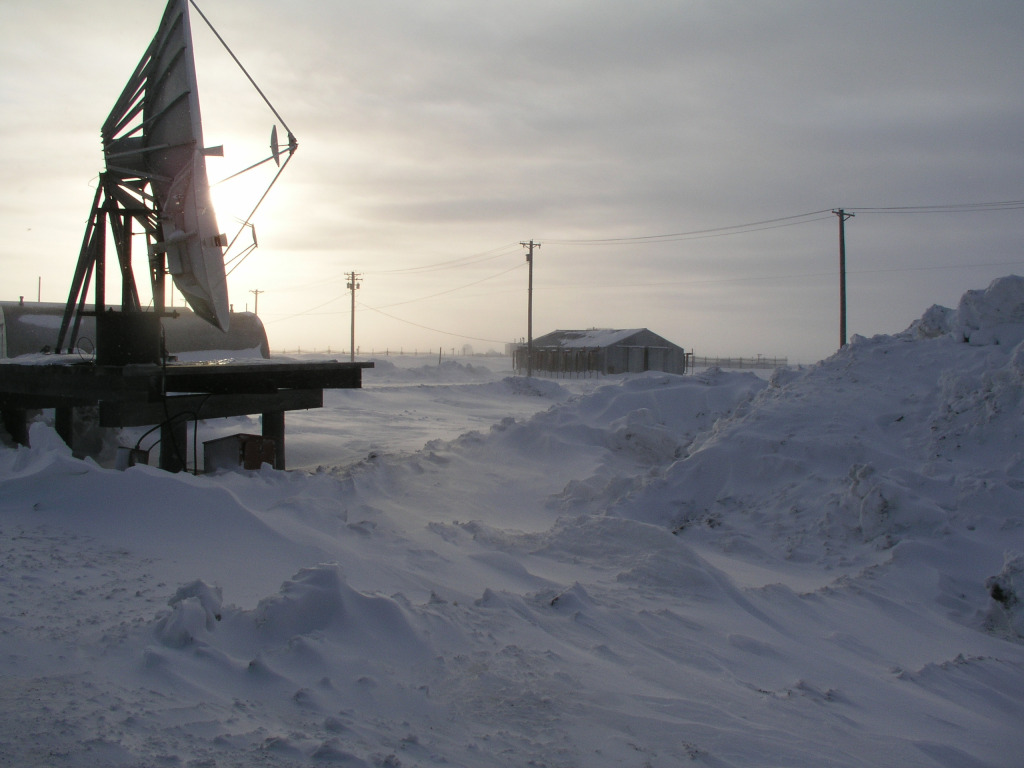
The mining dilemma
The zero-carbon transition requires not only renewable energy, but also batteries to store it. In a comprehensive article for the Barents Observer in July 2020, Thomas Nilsen describes how the hunt for rare metals to make batteries for electric vehicles is threatening the lifestyles of reindeer herders in Finland and other parts of northern Scandinavia. Nickel, copper, vanadium and cobalt are some of the minerals in high demand. Nilsen visited Saami reindeer herders in Lapland including Minna Näkkäläjärvi. “It’s not possible for reindeer husbandry and mining to co-exist in the same area,” she told him. Reindeer shift and migrate, depending on factors including the weather conditions, which are becoming increasingly less predictable in a changing climate.
Inga Anne Karen Sara and her family, quoted above, have been fighting a copper mine which they say will disrupt the reindeer and pollute the fjord with mining refuse dumped there, also harming the livelihoods of those who fish there.
Member of the Sami parliament in Finland Pirita Näkkäläjärvi, also mentioned earlier, also discusses the search for metals and minerals in the “Arm of Finland” region visited by Nilsen in a diary entry for the Goethe Institute publication. She lists copper, nickel, gold, chrome, vanadium, titanium, platinum, palladium, osmium, rhodium, iridium and ruthenium amongst the substances being prospected for, many of which are used in electric car batteries.
“This leads to a dilemma. On the one hand, electrifying transport is to facilitate the turning away from fossil fuels. On the other hand, we are just beginning to understand how important the traditional knowledge of the Indigenous peoples can be in dealing with climate change. But how can these people develop and spread their traditional knowledge if the land they live on is given over to mining”, she writes. “It is wrong for states to be prepared to sacrifice the cultures of their Indigenous peoples for mining”, she insists.
Alongside Sami politician Pirita Näkkäläjärvi, she put her signature at the top of the online petition against mining activities in the “Arm of Finland” which was handed to the Finnish government last July. Pirita Näkkäläjärvi hopes the Corona virus may actually increase its chances of success. People are spending a lot of time outdoors, she says. They are appreciating the value of untouched nature.
COVID recovery – risks and opportunities
UNEP- chief Inger Andersen would agree with that.
“In showing how the health of people and nature are intertwined, the COVID-10 crisis has underlined the need for a step-change in how we view and value nature. By reflecting that value in decision-making – whether we are talking about economic policy or personal choices – we can bring about a rapid and lasting shift toward sustainability for both people and the environment.”
It remains to be seen how that will pan out in the inevitable conflicts over land use as the world strives to reach carbon neutrality by 2050. Our hunger for renewable energy has to be in harmony with the need to maintain forms of land use that have their own role to play in protecting the climate.
No going back to business as usual!
As the world struggles to recover from the pandemic which forced us all to slow down, there is a real opportunity to re-think our lifestyles and the patterns of resource-consumption that have led us to the climate emergency. The shift to green energy is the way forward – but it has to be part of a holistic understanding of the planet we live on and its limited resources. Quick-fixes that destroy natural assets to satisfy excessive global energy demands are not sustainable solutions. Decentralised, truly renewable energy projects which benefit the local stakeholders could be.
Eva Maria Fjellheim,a PhD fellow at the Centre for Saami Studies at UiT, the Arctic University of Norway and climate justice activist Florian Carl, attack what they call “the numerous reckless practices behind Europe’s “green” energy transition,” in a piece for Al Jazeera:
“The “green” energy industry promises to build a sustainable wonderland with electric cars and bullet trains powered by limitless renewable energy supply. It reinforces the dangerous idea that we can maintain our addiction to high-energy lifestyles in a sustainable way.”
Perhaps it is time for us in the developed, industrialised, consumer-driven world to rethink what we need and where we might be able to live happily with less and in so doing, preserve the world for future generations. Susanne Haetta is a Saami artist and author from Norway. In the German publication The Right to be Cold, she compares what she describes as the “cultures of colonial capitalism” with those of people who have always paid attention to sustainability in using nature:
“In Indigenous cultures this leads to considerable responsibilities for your own traditions, family and your surroundings. This results in respect and gratitude towards the treasures of nature”.
Indigenous people only take what they need from nature – and make sure they do not leave traces nature cannot absorb – and that there is enough left to regenerate, she says.
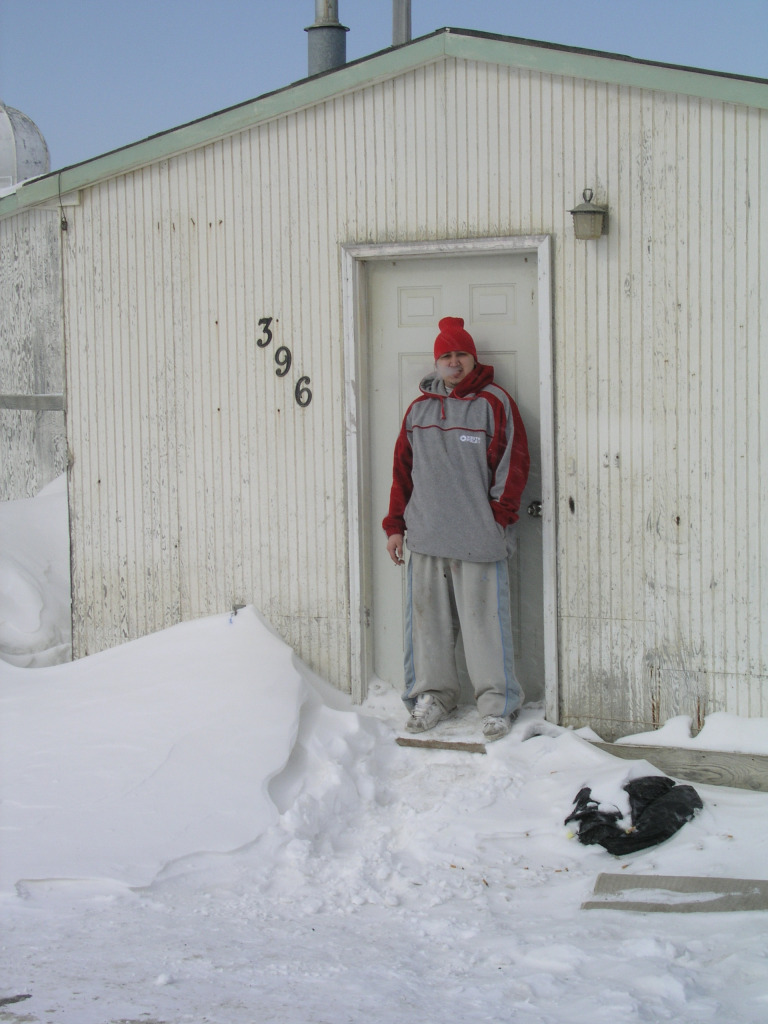
“Repair our relationship with the Arctic, globally”
Edward Alexander is Co-Chair of the Gwichin Council International. At a session of Arctic Frontiers to mark 25 years of the Arctic Council, he noted that the Gwichin had been living in the north for 25,000 years. Their principles were good enough to last that long, he says. In ancient times, “We spoke the same language – also the same as plants and animals”. Now, that is no longer the case. The region is now under threat from climate change and pollution. We need to re-establish the old relationship with nature, Alexander said. To make the world habitable – in the north and in the south, “we must repair our relationship with the Arctic globally and all the creatures who inhabit it.”
“By transforming how we view nature, we can recognize its true value. By reflecting this value in policies, plans and economic systems, we can channel investments into activities that restore nature and are rewarded for it”, said UN Secretary-General Antonio Guterres in the foreword to the UN report Making Peace with Nature.
For the Arctic in particular, that means including the Indigenous peoples in consultations at all levels.
Tero Mustonen is a climate researcher and IPCC author working for the Finnish conservation organisation Snowchange Cooperative. The network of local and Indigenous cultures around the world advocates reviving degraded ecosystems to create new carbon dioxide sinks. “It is important to put the people who are directly affected – Indigenous and local communities – at the centre of the work of the United Nations. “We must realize that humans and nature are parts of the same system – most people forgot that long ago”, he says.
More cooperation with scientists and modellers, was one suggestion from permafrost scientist Merrit Turrestsky at the Permafrost Dialogues. “Amplify Arctic voices”, to make sure those on the front lines of climate change are taken into consideration.
At Arctic Frontiers, Arctic expert and Cryopolitics blogger Mia Bennett called for more funding to bring Indigenous people to international meetings and summits to bring Indigenous perspectives to international bodies.
Harvard Senior Fellow Joel Clement described Indigenous knowledge as the “key to thriving through rapid Arctic change”. We can’t achieve social justice or equity by western science alone, he said in a keynote to Arctic Frontiers. But the path to “elevate Indigenous knowledge” is underway, he says, optimistic. “Open this Indigenous moment into an era”, he urged. That could benefit us all as we move to “make peace with nature” and move on from the climate-harming habits that have become addictions over the last 270 years.
Related stories from around the North:
Canada: Community in northern Quebec to make the jump from diesel to hydroelectricity, CBC News
Finland: How will Finland become carbon neutral by 2035?, Yle News
Monaco: Sea level rise to provoke ‘profound governance challenges’ & ‘difficult social choices’ says UN climate report, Eye on the Arctic
Norway: Emissions dropping in EU, but not in Norway, The Independent Barents Observer
Russia: Climate change threatens security and industry, Russian PM says, The Independent Barents Observer
Sweden: Local councils in Sweden more interested in climate change preparedness, Radio Sweden
United Kingdom: Documentary will show climate change through eyes of pioneering scientist, Cryopolitics Blog
United States: Alaska remote diesel generators win exemption from pollution rule, Alaska Public Media

